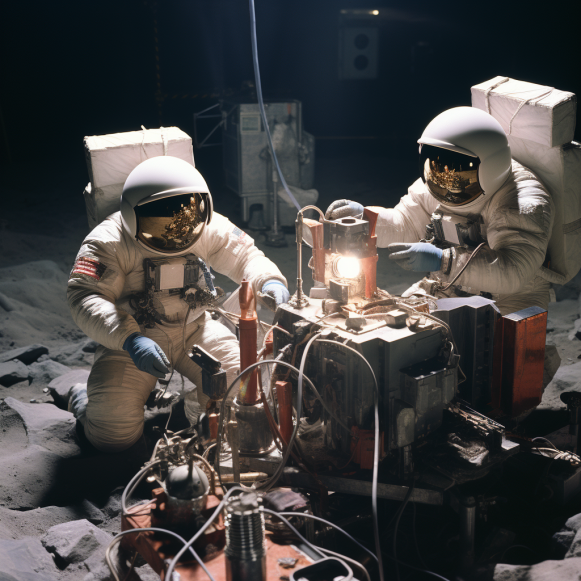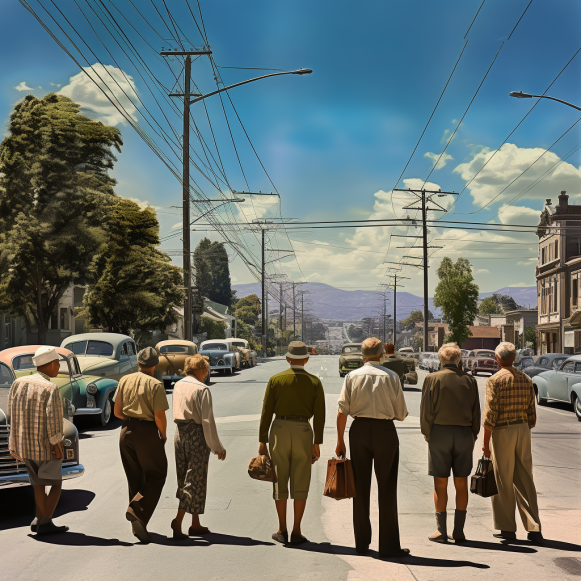Dust collected by Apollo 17 mission shows moon’s true age

NASA astronauts Eugene Cernan and Harrison Schmitt collected rocks and dust in 1972
The moon is 40 million years older than previously thought, according to lunar dust collected by Apollo 17 astronauts in the 1970s.
NASA astronauts Eugene Cernan and Harrison Schmitt collected rocks and dust from the lunar surface after landing on the moon on December 11, 1972. A new analysis of that sample found zircon crystals that were 4.46 billion years old. Previous estimates put the moon’s age at 4.425 billion years, formed by a massive celestial collision.
The findings were published in Geochemical Perspectives Letters on Monday.
“These crystals are the oldest known solids to have formed following the massive impact.” “And because we know how old these crystals are, they serve as an anchor for the lunar chronology,” said senior study author Philipp Heck, the Robert A. Pritzker Curator for Meteoritics and Polar Studies at Chicago’s Field Museum of Natural History, in a statement.
When Earth was still forming and growing in size, the early days of our solar system were chaotic, with rocky bodies frequently colliding in space. According to the researchers, a Mars-sized object collided with Earth more than 4 billion years ago, flinging off a large rocky fragment that became the moon. However, scientists have struggled to pinpoint the exact date of this pivotal event.
The energy released by the Mars-sized object colliding with Earth melted the rock that would eventually form the moon’s surface.
“Zircon crystals couldn’t form and survive on such a molten surface.” “Any crystals on the Moon’s surface must have formed after this lunar magma ocean cooled,” Heck, who is also the senior director of the museum’s Negaunee Integrative Research Center and a professor in the University of Chicago’s department of geophysical sciences, explained.
“Otherwise, they would have been melted and their chemical signatures would be erased.”
Advanced atomic analysis
Previous research by study coauthor Bidong Zhang, an assistant researcher in the department of Earth, planetary, and space sciences at the University of California, Los Angeles, suggested that determining the age of the crystals within the lunar dust could also reveal the moon’s true age.
Heck and lead study author Jennika Greer, a research associate in Earth sciences at the University of Glasgow, approached Zhang and fellow coauthor Audrey Bouvier, professor of experimental planetology at Bayreuth University in Germany, to take a nanoscale look at the crystals using an advanced technique to determine their chemical composition and pinpoint the moon’s age.
According to the study authors, this is the first time the analytical method of dating crystals with atom probe tomography has been used, and it was carried out using instruments at Northwestern University in Evanston, Illinois.
“In atom probe tomography, we start by sharpening a piece of the lunar sample into a very sharp tip, almost like a very fancy pencil sharpener, using a focused ion beam microscope,” explained Greer, who was a doctoral candidate at the Field Museum and the University of Chicago when she worked on the study. “We then use UV lasers to evaporate atoms from the tip’s surface.” The atoms pass through a mass spectrometer, and the speed at which they move tells us how heavy they are, which tells us what they’re made of.”
The analysis revealed how many uranium atoms in the zircon crystals were radioactively decayed. Elements can transform if their atoms have an unstable configuration of protons and neutrons, which causes some of them to decay, as uranium does to become lead. Scientists can determine the age of something by comparing the ratio of uranium to lead atoms and tracking how long this process takes.
“Radiometric dating works a little bit like an hourglass,” Heck pointed out. “In an hourglass, sand flows from one glass bulb to the next, with the accumulation of sand in the lower bulb indicating the passage of time.” Radiometric dating works in the same way, counting the number of parent atoms and the number of daughter atoms that have been transformed. Because the transformation rate is known, the passage of time can be calculated.”
‘The Moon’s oldest part’
The team used lead isotopes in the lunar dust sample to determine that the crystals were 4.46 billion years old, implying that the moon is at least that old as well.
“It’s amazing being able to have proof that the rock you’re holding is the oldest bit of the Moon we’ve found so far,” he said. “It serves as a focal point for so many Earth-related questions.” Knowing how old something is allows you to better understand what has happened to it throughout its history.”
Although the lunar samples were returned to Earth more than 50 years ago, developing the technology required to conduct such a detailed analysis of the crystals took time. This is why NASA has waited until recently to open some of the pristine samples collected during the Apollo era, allowing for greater insights into our planet’s natural satellite using the most advanced methods.
“The Moon is an important partner in our planetary system,” he said. “It stabilizes the Earth’s rotational axis, which is why there are 24 hours in a day and tides.” Life on Earth would be very different if the Moon did not exist. It’s a part of our natural system that we want to better understand, and our research is a small piece of the puzzle.”





